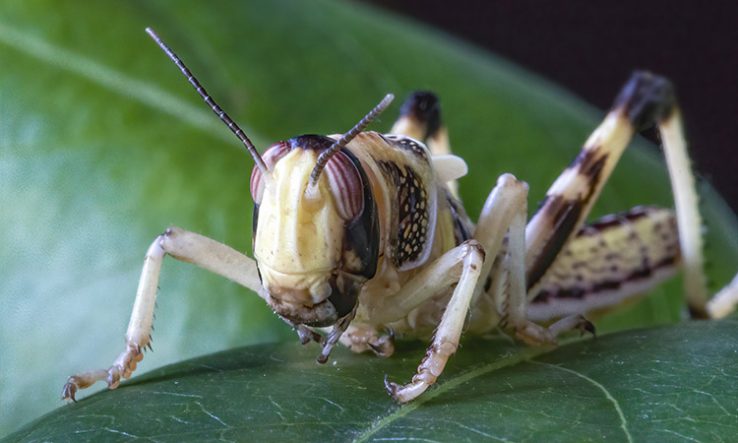
Bringing open sources and expertise together can help smallholders protect their crops, says André Laperriere
When locusts swarm they can come together in their billions and are capable of stripping crops and pastures. Without timely and effective control measures, sporadic cases of desert locusts can become a plague.
Since late 2019, parts of east Africa have been experiencing their worst locust outbreak in 70 years, posing a serious threat to the region’s societies.
Smallholder farmers are on the frontline. A small swarm of desert locusts can eat as much food as 35,000 people per day. This comes alongside losses to other pests—the spread of fall armyworm across sub-Saharan Africa, for example, is estimated to be causing crop damage costing up to US$6.1 billion (€5.5bn) per year.
Yet smallholders can play a crucial part in tackling pests. Giving farmers access to better surveillance technology, enabling them to monitor pests in real time and forecast potential outbreaks, can allow infestations to be tracked and managed.
Such tools are only as good as the data they are based on. Field data on, among other things, vegetation, rainfall, locust numbers and control measures are needed to assess and forecast the scale, timing and location of locust breeding and migration. But the rarity of large locust plagues means there are few structures to respond to them, and those that do exist are neglected between outbreaks.
Earth observation
Fortunately, efforts on the ground are increasingly supported from space. Earth observation data collected by satellites has become crucial for monitoring locust breeding and swarming, forecasting and preempting population explosions and swarm movements. Access to such information reduces the workload on overstretched and underfunded field teams.
These monitoring systems are already being used to help farmers reduce the cost of their inputs, use less water, resist infestations and improve their yields. This means locust monitoring can form part of a wider system that does not run down between crises.
Initiatives in Kenya, for example, are making use of satellite data and advanced analytics, along with growing supercomputing capacity, funded partly by the UK Department for International Development. These projects work to develop tools allowing staff on the ground to identify areas prone to degradation, floods, droughts, pests and other natural calamities. The next step is to make these widely available via apps that give farmers live tracking data and agricultural advice.
Data need to be collated, processed, summarised and analysed before they can become useful in combating the outbreak. This requires improved data management, underpinned by a regulatory and ethical framework. All these are priorities for the Kenyan government.
That is where Global Open Data for Agriculture and Nutrition comes in. Godan is a network of over 1,000 organisations in 115 countries. It was founded in 2015, with the aim of creating truly data-driven agriculture and improving the lives of millions of smallholders worldwide.
Generating ideas
Since 2018, Godan, together with its partners, has staged hackathons—collaborative events aimed at building relationships, accelerating progress and gener-ating ideas for future research and innovation. Last year’s event in Nairobi attracted 200 participants from 26 African countries to tackle challenges in agriculture, climate, transport, tourism and citizen science.
This year’s hackathon, based in Kampala, Uganda, is taking place virtually, with participants from all corners of Africa and beyond. It launched in March and runs until July 2020. It aims to build and strengthen relationships created during last year’s event, including several between EU-funded projects and African teams.
One challenge of the hackathon is to develop ways to control the spread and breeding of locusts, along with early warning systems to detect and predict outbreaks and protect human, animal and soil life.
This will require use of data on locust biology and populations, along with other information such as rainfall estimates, to better understand the relationship between infestations and the local environment. The aim is to develop a model capable of identifying risk zones for swarm-ing, and so support local initiatives to monitor and control locusts.
Locust control is hindered by a shortage of trained personnel. So as well as generating new results and tools, the hackathon has a capacity-building element, delivered through webinars, for example. In this way, the transfer of knowledge—often across disciplines—runs side by side with work on the challenge itself.
André Laperriere is the executive director of Global Open Data for Agriculture and Nutrition, based in Montreal
This article also appeared in Research Europe